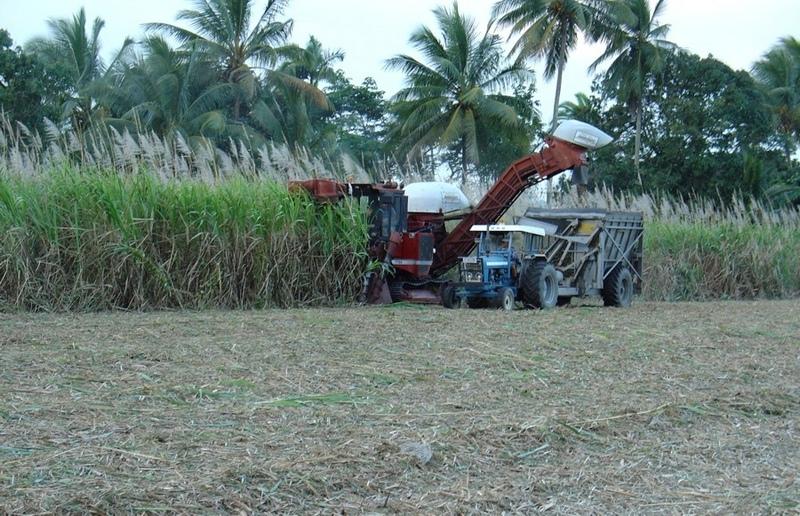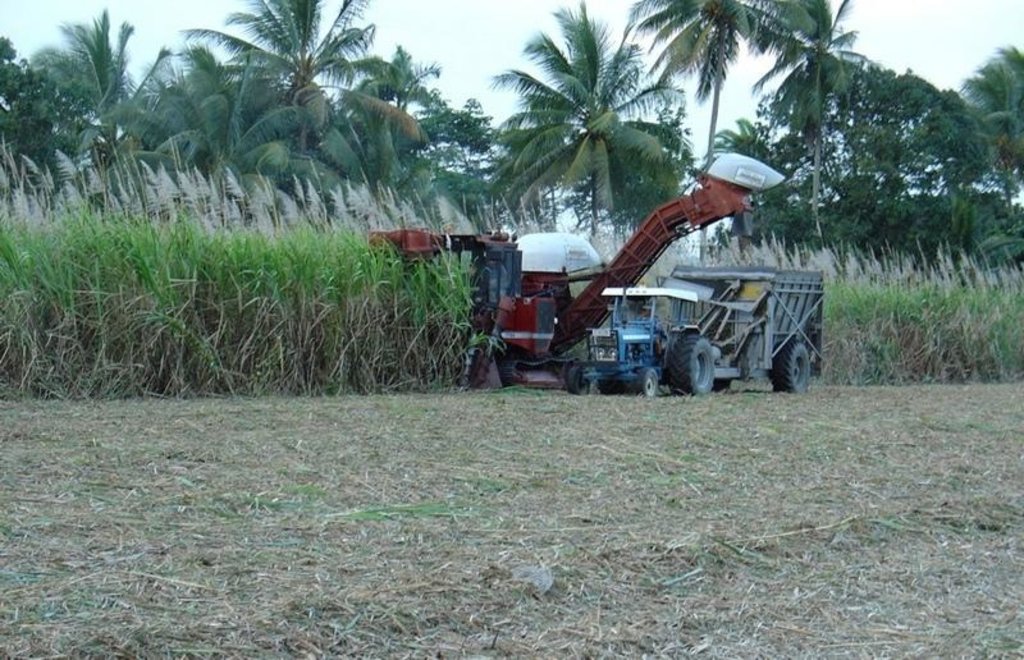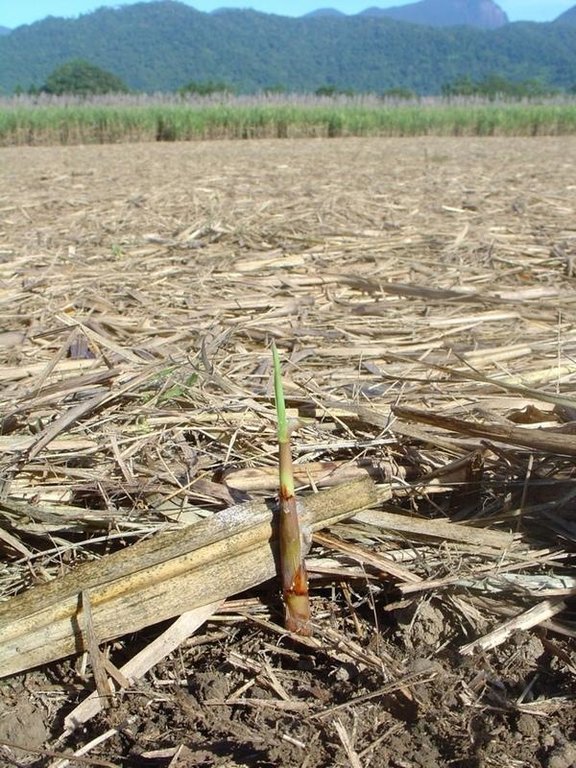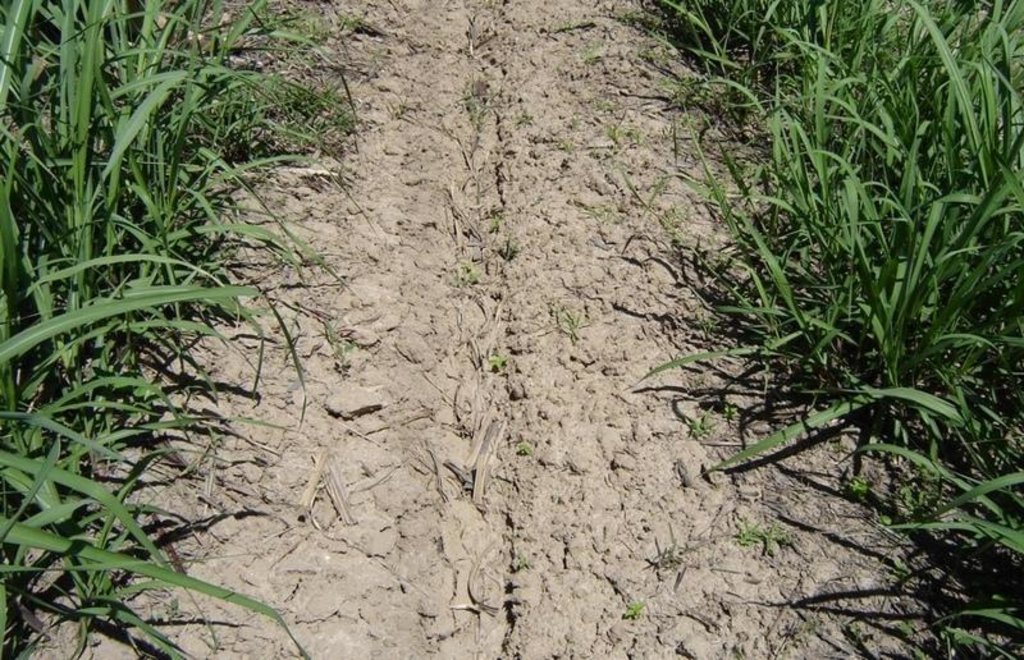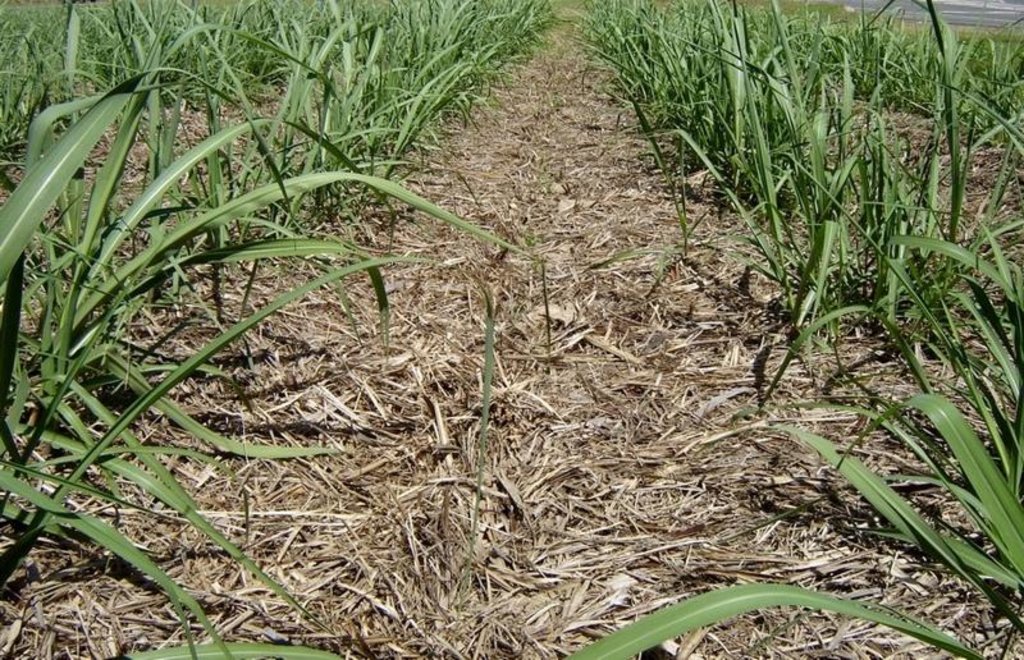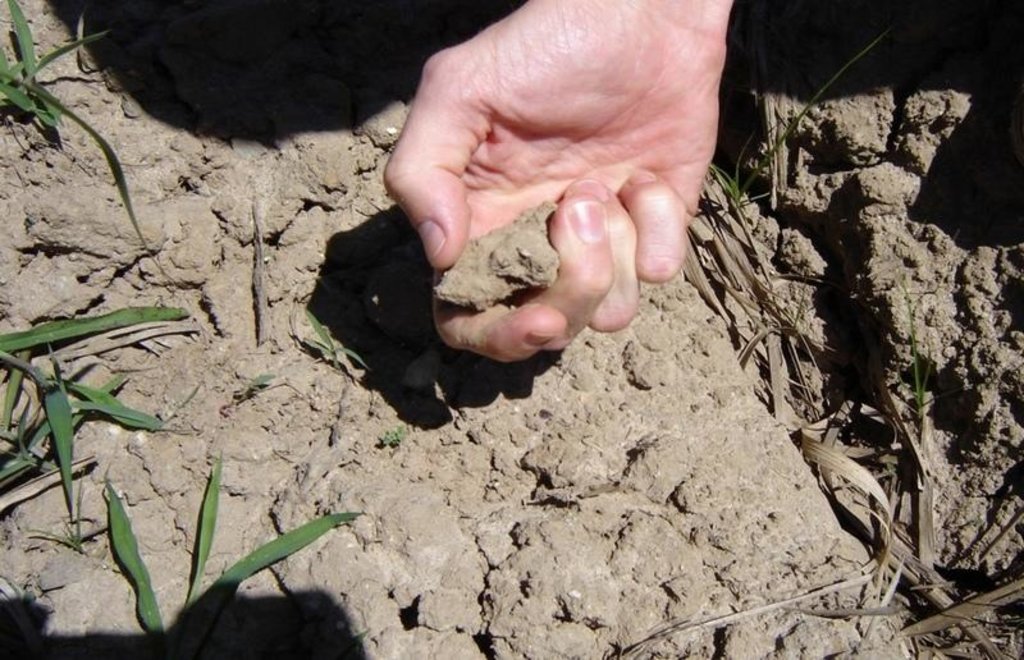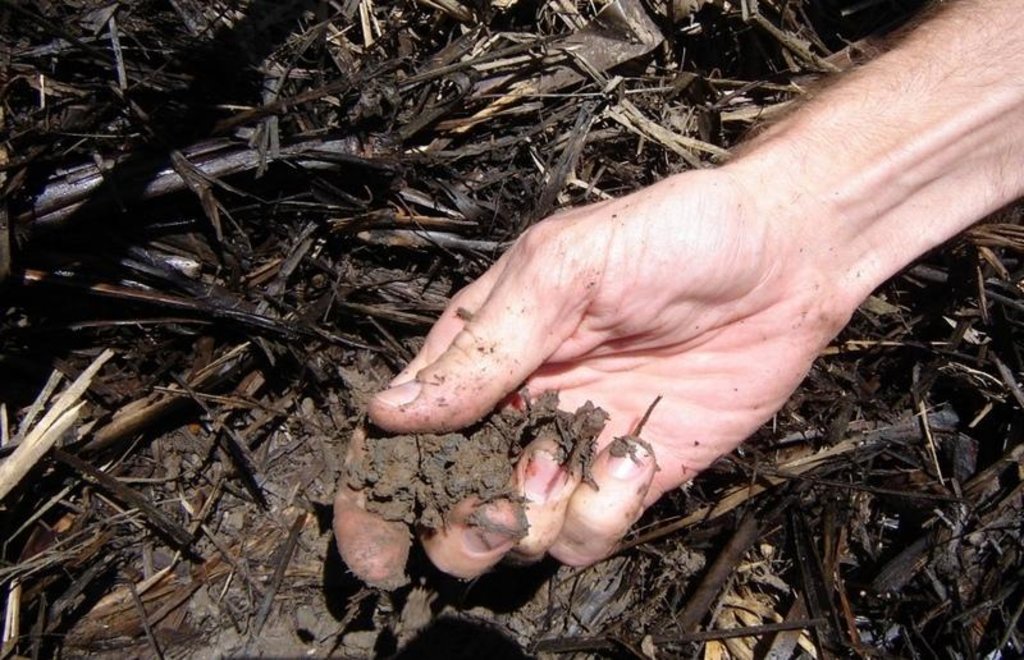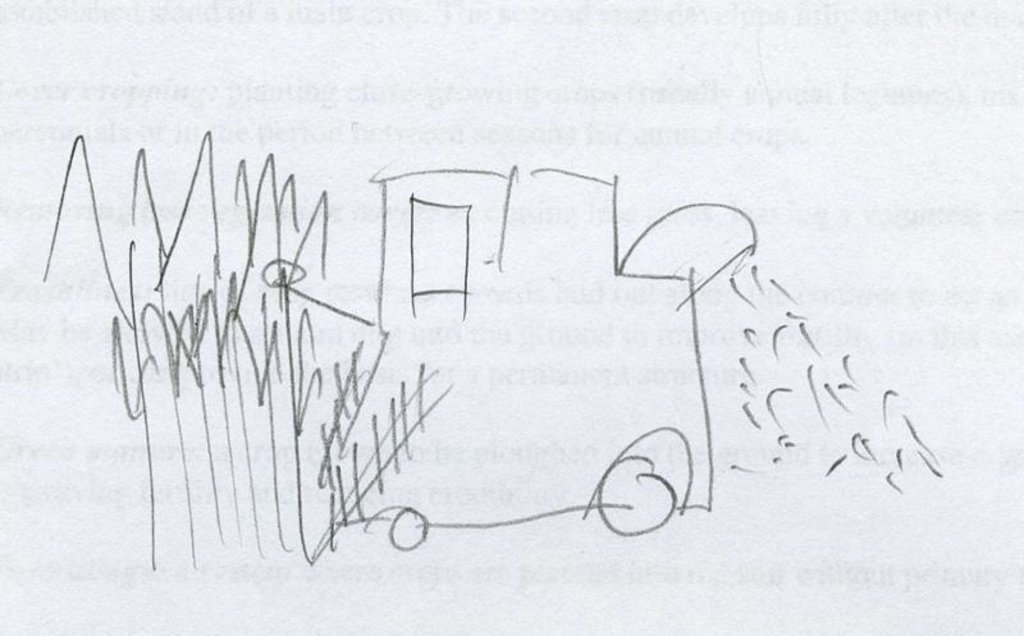Green cane trash blanket [Австрали]
- Шинийг нээх:
- Шинэчлэх:
- Эмхэтгэгч: Anthony J. Webster
- Хянан тохиолдуулагч: –
- Хянагч: Alexandra Gavilano
Trash blanket
technologies_951 - Австрали
Бүлгүүдийг үзэх
Бүгдийг дэлгэх Бүгдийг хаах1. Ерөнхий мэдээлэл
1.3 ВОКАТ-аар баримтжуулсан өгөгдлийг ашиглахтай холбоотой нөхцөл
Мэдээллийг хэзээ (газар дээр нь) цуглуулсан бэ?
01/09/2005
Эмхэтгэгч болон гол мэдээлэгч хүн(хүмүүс) WOCAT аргачлалаар баримтжуулсан мэдээллийг ашиглахтай холбоотой нөхцлийг хүлээн зөвшөөрсөн:
Тийм
2. ГТМ Технологийн тодорхойлолт
2.1 Технологийн товч тодорхойлолт
Технологийн тодорхойлолт:
Elimination of burning as a pre-harvest treatment of sugar cane, and managing the resultant trash as a protective blanket to give multiple on and off-site benefits.
2.2 Технологийн дэлгэрэнгүй тодорхойлолт
Тодорхойлолт:
Under conventional production systems, sugar cane is burnt before being harvested. This reduces the volume of trash - comprising green leaves, dead leaves and top growth - making harvesting of the cane simpler, and subsequent cultivation of the soil easier. In the humid tropics of North Queensland, harvesting of cane used to be carried out by hand - as it still is in many parts of the developing tropics. Burning was necessary to make harvesting possible in a dense stand (and to reduce the danger of snakes). However, with the advent of mechanical harvesters in the 1960s, burning continued to be practiced through habit.
A new system then brought fundamental changes in soil management: The ‘green cane trash blanket’ (GCTB) technology refers to the practice of harvesting non-burnt cane, and trash blown out behind in rows by the sugar cane harvester. This trash forms a more or less complete blanket over the field. The harvested lines of cane re-grow (‘ratoon’) through this surface cover, and the next year the cycle is repeated: the cane is once again harvested and more trash accumulates in the inter-rows. Generally the basic cropping cycle is the same, whether cane is burnt or not. This involves planting of new cane stock (cuttings or ‘billets’) in the first year, harvesting this ‘plant crop’ in the second year, and then in years three, four, five and six taking successive ‘ratoon’ harvests. In year six, after harvest, it is still common, even under the GCTB system, to burn the residual trash so that the old cane stools can be more easily ploughed out, and the ground ‘worked up’ (cultivated) ready for replanting. A minority of planters, however, are doing away with burning altogether, and ploughing in the residual trash before replanting. A further variation is not to plough out and replant after the harvest in year six, but to spray the old cane stock with glysophate (a broad spectrum non-selective systemic herbicide) to kill it, then to plant a legume (typically soy bean) as a green manure crop, and only replant the subsequent year after ploughing-in the legume. Under this latter system, one year of harvest is lost, but there are added benefits to the structure and nutrient content of the soil.
Whatever variation of GCTB is used, there are advantages in terms of increased organic matter, improved soil structure, more biodiversity (especially below ground) and a marked reduction in surface erosion - from over 50 t/ha to around 5 t/ha on average. Less erosion is good for the growers - but is also of crucial importance off-site, as sediment lost from the coastal sugar cane strip is washed out to sea, and damages the growing coral of the Great Barrier Reef.
2.3 Технологийн гэрэл зураг
2.5 Энэ үнэлгээнд хамрагдсан технологийг хэрэгжүүлсэн улс орон/ бүс нутаг/ байршил
Улс:
Австрали
Улс/аймаг/сум:
North Queensland, Australia
Байршлын дэлгэрэнгүй тодорхойлолт:
Ingham
Map
×3. ГТМ технологийн ангилал
3.2 Технологи нэвтрүүлсэн газрын одоогийн газар ашиглалтын хэлбэр(үүд)

Тариалангийн талбай
- Олон наст (модлог биш) үр тариа
Тайлбар:
Major land use problems (compiler’s opinion): Conventional burning of sugar cane before harvest can lead to compaction of top soil and reduced organic matter. There is also, despite the low slopes, a serious problem of sheet/rill erosion that has a negative impact both on the fields, and also off-site on the coral reef.
Major land use problems (land users’ perception): soil erosion, weeds, flooding
3.3 Газар ашиглалтын тухай нэмэлт мэдээлэл
Технологи хэрэгжүүлсэн газрын усан хангамж:
- Байгалийн усалгаатай
Жилд ургамал ургах улирлын тоо:
- 1
Тодорхойлно уу:
Longest growing period in days: 300
Longest growing period from month to month: Aug - May
3.5 Технологийн хамрах талбай
Тайлбар:
Total area covered by the SLM Technology is 800 m2.
Wet tropics region of far north Queensland
3.6 Технологийг бүрдүүлэх ГТМ арга хэмжээ
3.7 Технологид харгалзах газрын доройтлын төрөл

хөрс усаар эвдрэх
- Wt: Хөрсний гадаргын угаагдал
- Wo: Усны элэгдлийн дам нөлөө

хөрсний химийн доройтол
- Cn: Үржил шим ба ялзмаг буурах (элэгдлийн шалтгаангүй)
Тайлбар:
Main type of degradation addressed: Wt: loss of topsoil / surface erosion, Wo: offsite degradation effects, Cn: fertility decline and reduced organic matter content
3.8 Газрын доройтлоос урьдчилан сэргийлэх, сааруулах ба нөхөн сэргээх
Газрын доройтолтой холбоотойгоор Технологи ямар зорилго тавьсан болохыг тодорхойл:
- Газрын доройтлыг бууруулах
Тайлбар:
Main goals: mitigation / reduction of land degradation
4. Техникийн нөхцөл, хэрэгжүүлсэн үйл ажиллагаа, материал ба зардал
4.1 Технологийн техник зураг
4.2 Техникийн үзүүлэлт/ техникийн зургийн тайлбар
Harvester harvesting cane and depositing trash on surface
Location: Queensland
Technical knowledge required for field staff / advisors: low
Technical knowledge required for land users: low
Main technical functions: control of raindrop splash, improvement of ground cover, improvement of soil structure, control of dispersed runoff
Secondary technical functions: increase in organic matter, increase of infiltration, increase in soil fertility, increase in surface roughness
Mulching
Remarks: "trash blanketing"
4.3 Материал болон зардалд хамаарах ерөнхий мэдээлэл
Хөлсний ажилчны нэг өдрийн цалингийн хэмжээг тодорхойлно уу:
100.00
4.6 Арчилгаа/ урсгал үйл ажиллагаа
| Үйл ажиллагаа | Арга хэмжээний төрөл | Хугацаа/ давтамж | |
|---|---|---|---|
| 1. | mulching of inter-rows with trash [previously: burn cane with associated trash and then harvest] | Агрономийн | August |
| 2. | fertilize cane | Агрономийн | October |
| 3. | spray with Amicide (very efficient herbicide, systemic and non-selective) | Агрономийн | November |
| 4. | spray with Amicide | Агрономийн | January |
4.7 Арчилгаа/урсгал ажилд шаардагдсан зардал, хөрөнгийн өртөг (нэг жилд)
Тайлбар:
Machinery/ tools: sugar-cane harvester
The year budgeted above is a non-planting year, the costs therefore refer to an established crop which grows
throughout the year and is harvested in August. The assumption is a cane yield of 80 t/ha. Each of the three categories of costing groups machinery, labour (at US$12 per hour) and inputs together. The comparative costs for a burnt cane crop system with the same yield are (a) contract harvesting = US$ 378 (b) fertilizer = US$ 120 (c) herbicide = US$ 56, plus (d) cultivation = US$ 30. Note that under the burnt cane system, soil cultivation/tillage is required, but the cost of harvesting is a little cheaper. The total for the burnt crop system is US$ 584 compared with US$ 543 for the GCTB crop, representing a saving of approx. US$ 40 (around 7%) per hectare per year.
5. Байгаль ба нийгмийн нөхцөл
5.1 Уур амьсгал
Жилийн нийлбэр хур тундас
- < 250 мм
- 251-500 мм
- 501-750 мм
- 751-1,000 мм
- 1,001-1,500 мм
- 1,501-2,000 мм
- 2,001-3,000 мм
- 3,001-4,000 мм
- > 4,000 мм
Хур тунадасны талаархи тодорхойлолт/ тайлбар:
Annual rainfall: 2000-3000 mm, 3000-4000 mm
Агро-уур амьсгалын бүс
- чийглэг
Thermal climate class: tropics
5.2 Гадаргын хэлбэр
Дундаж налуу:
- хавтгай (0-2 %)
- бага зэрэг налуу (3-5 %)
- дунд зэрэг налуу (6-10 % )
- хэвгий (11-15 %)
- налуу (16-30 %)
- их налуу (31-60 % )
- эгц налуу (>60 %)
Гадаргын хэлбэр:
- тэгш өндөрлөг / тал
- нуруу
- уулын энгэр
- дов толгод
- бэл
- хөндий
Өндрийн бүслүүр:
- 0-100 д.т.д. м.
- 101-500 д.т.д. м.
- 501-1,000 д.т.д м.
- 1,001-1,500 д.т.д м.
- 1,501-2,000 д.т.д м.
- 2,001-2,500 д.т.д. м.
- 2,501-3,000 д.т.д. м.
- 3,001-4,000 д.т.д м.
- > 4,000 д.т.д. м.
5.3 Хөрс
Хөрсний дундаж зузаан:
- маш нимгэн (0-20 см)
- нимгэн (21-50 см)
- дунд зэрэг зузаан (51-80 см)
- зузаан (81-120 cм)
- маш зузаан (>120 cм)
Хөрсний бүтэц (өнгөн хөрс):
- нарийн /хүнд (шаварлаг)
- дундаж (элсэнцэр, шавранцар)
Өнгөн хөрсөнд агуулагдах ялзмаг:
- бага (<1 % )
5.6 Технологи нэвтрүүлсэн газар ашиглагчдын тухай мэдээлэл
Үйлдвэрлэлийн системийн зах зээлийн чиг баримжаа:
- худалдаа наймааны/ зах зээлийн
Бусад эх үүсвэрээс олох орлого:
- Нийт орлогын 10-50 %
Чинээлэг байдлын түвшин:
- дундаж
Газар ашиглагчдын бусад шинж чанарыг тодорхойл:
Off-farm income specification: various off-farm enterprises undertaken to supplement income during years of poor sugar prices
5.7 Технологи нэвтрүүлсэн газар ашиглагчийн өмчилж буй, эзэмшиж буй, түрээсэлж буй эсвэл ашиглаж буй (ашиглах эрх) газрын талбай
- < 0.5 га
- 0.5-1 га
- 1-2 га
- 2-5 га
- 5-15 га
- 15-50 га
- 50-100 га
- 100-500 га
- 500-1,000 га
- 1,000-10,000 га
- > 10,000 га
Тайлбар:
Average area of land owned or leased by land users applying the Technology: 15-50 ha, 50-100 ha, 100-500 ha
5.8 Газар эзэмшил, газар ашиглах эрх, ус ашиглах эрх
Газар өмчлөл:
- хувь хүн, өмчийн гэрчилгээтэй
Газар ашиглах эрх:
- хувь хүн
6. Үр нөлөө ба дүгнэлт
6.1 Технологийн талбайд үзүүлсэн нөлөө
Нийгэм-эдийн засгийн үр нөлөө
Орлого, зарлага
тухайн аж ахуйн орлого
Нийгэм-соёлын үр нөлөө
маргааныг шийдвэрлэх
Экологийн үр нөлөө
Усны эргэлт/ илүүдэл
гадаргын урсац
усны урсац
Хөрс
хөрсний чийг
хөрсөн бүрхэвч
хөрс алдагдах
хөрсний органик нэгдэл/ хөрсөнд агуулагдах карбон
6.2 Технологийн талбайн гадна үзүүлсэн үр нөлөө
голын адагт үерлэх
голын адагт лаг шавар хуримтлагдах
газар доорхи ус/голын усны бохирдол
салхиар тээвэрлэгдэх хурдас
6.4 Өртөг ба ашгийн шинжилгээ
Арчилгаа/урсгал зардалтай харьцуулахад ямар ашиг өгсөн бэ (газар ашиглагчийн бодлоор)?
Богино хугацаанд эргэн төлөгдөх байдал:
бага зэрэг эерэг
Урт хугацаанд эргэн төлөгдөх байдал:
эерэг
6.5 Технологи нэвтрүүлэлт
Тайлбар:
95% of land user families have adopted the Technology without any external material support
1000 land user families have adopted the Technology without any external material support
There is a little trend towards spontaneous adoption of the Technology
Comments on adoption trend: It is possible that the few growers who persist in burning will eventually adopt the GCTB system through social and environmental pressure.
6.7 Технологийн давуу тал/боломжууд
| Эмхэтгэгч, бусад мэдээлэл өгсөн хүмүүсийн өнцгөөс тодорхойлсон давуу тал/боломжууд |
|---|
|
GCTB systems offer multiple on-farm environmental benefits How can they be sustained / enhanced? Continue to refine the system, by encouraging (a) non burning of trash in the |
|
Increases overall farm income by maintaining yields of sugar cane while How can they be sustained / enhanced? Continue to refine the system. |
|
GCTB systems provide protection to the coral reef, through substantially reducing the sediment yield that reaches the lagoon and thence the Great Barrier Reef How can they be sustained / enhanced? Give recognition to the growers for their overall environmental contribution. |
6.8 Технологийн дутагдалтай/сул тал/аюул болон тэдгээрийг хэрхэн даван туулах арга зам
| Эмхэтгэгч, бусад мэдээлэл өгсөн хүмүүсийн өнцгөөс тодорхойлсон сул тал/ дутагдал/ эрсдэл | Тэдгээрийг хэрхэн даван туулах вэ? |
|---|---|
| Some burning still continues through (a) the few farmers who have not yet adopted GCTB and (b) the common practice of burning trash before replanting | Continue to encourage non-burning for multiple reasons. |
7. Ном зүй ба холбоосууд
7.2 Ном, хэвлэлийн ишлэл
Гарчиг, зохиогч, он, ISBN:
Mullins JA, Truong PN and Prove BG (1984) Options for controlling soil loss in canelands – some interim values. Proc. Aust. Soc. Sugar Cane Technol., 6: 95–100
Гарчиг, зохиогч, он, ISBN:
Vallis I, Parton WJ, Keating BA and Wood AW (1996) Simulation of the effects of trash and N fertilizer management on soil organic matter levels and yields of sugarcane. Soil and Tillage Research. 38: 115–132
Гарчиг, зохиогч, он, ISBN:
Wood AW (1991) Management of crop residues
following green harvesting of sugarcane in north Queensland. Soil Till. Res. 20: 69–85
Холбоос ба модулууд
Бүгдийг дэлгэх Бүгдийг хаахХолбоосууд
Холбоос байхгүй байна
Модулууд
Модуль байхгүй байна


